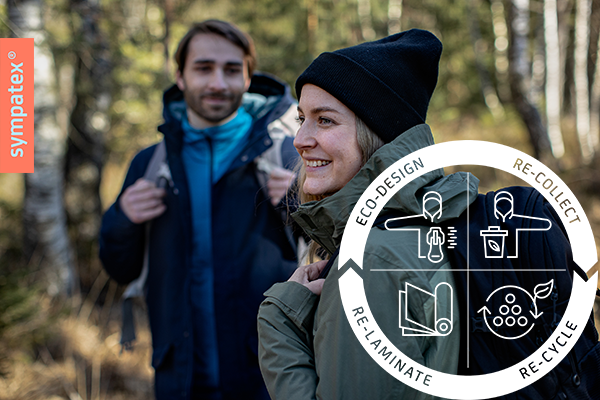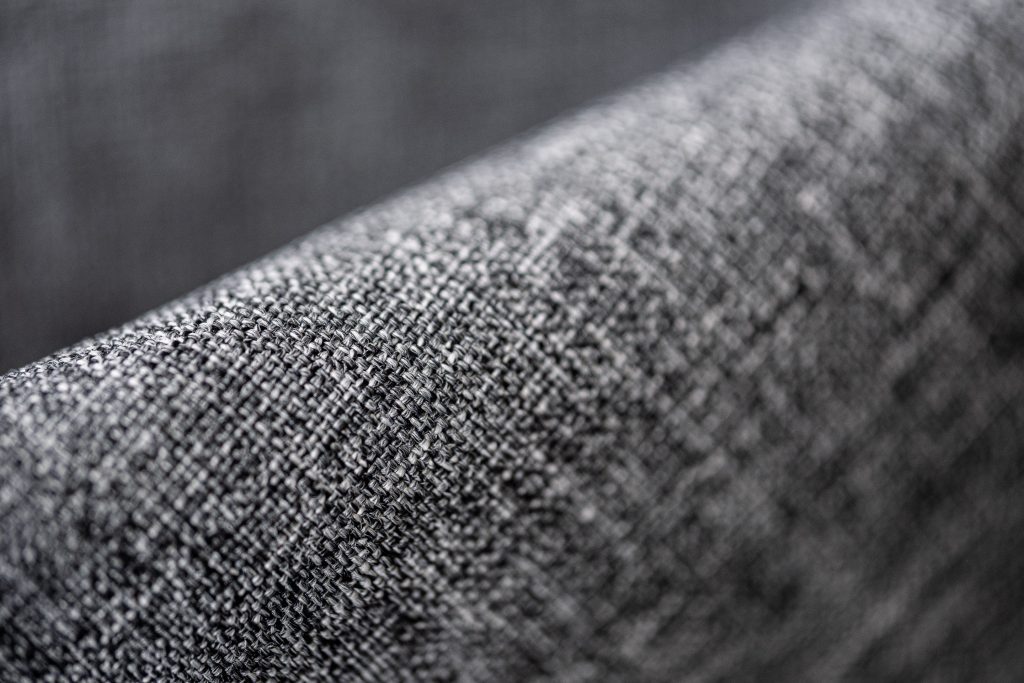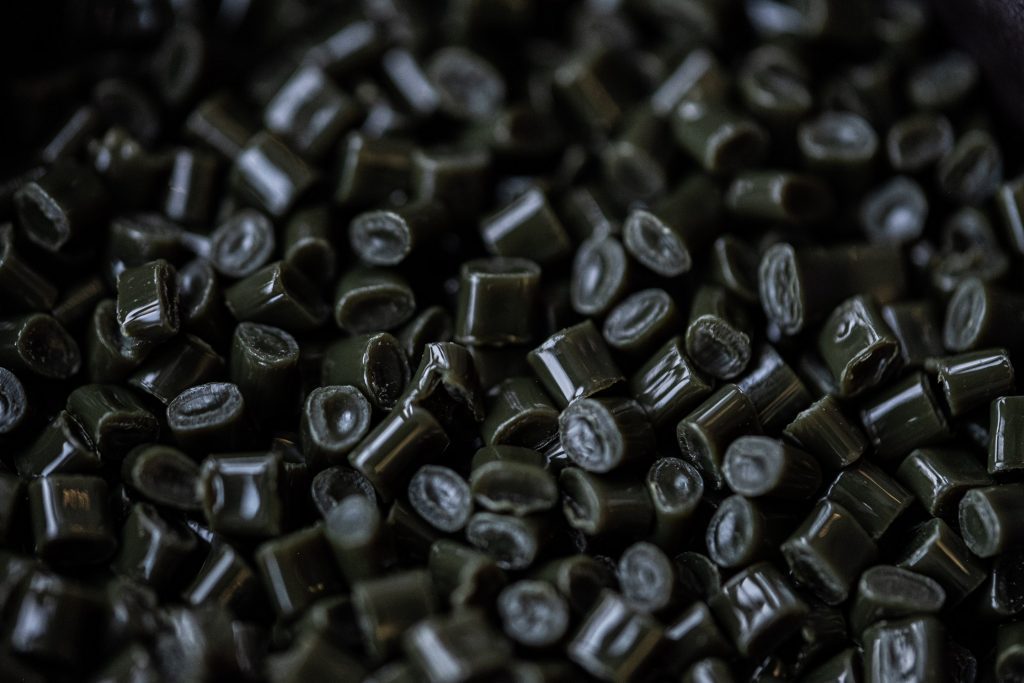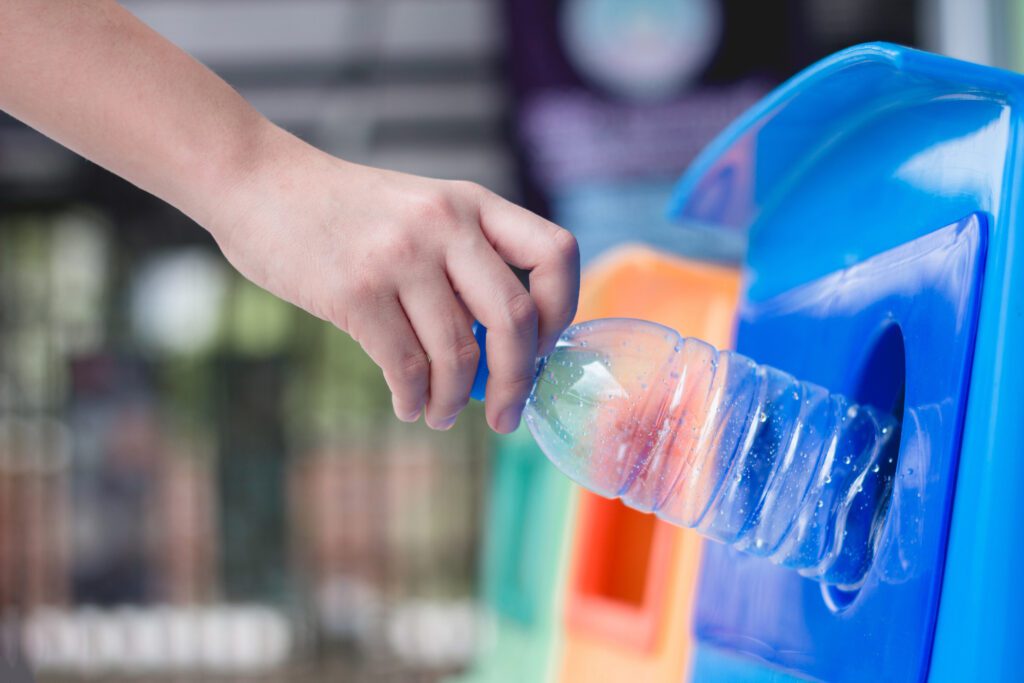Open to Re>close
- minutes reading time
A thought from our Corporate Social Responsibility department

While some companies still dream about producing their own recycled fibres from their own clothing, others are already realizing that not even the best orchestrated in-house take-back systems can generate the necessary quantities to fill recycling plants in an economically sustainable manner. Partly because the end consumer will not support it on a larger scale.
Sympatex, too, had its first experience back in the mid-1990s as part of the Ecolog project that the garments recovered from the end consumer were nowhere near sufficient for efficient recycling.
More than 25 years later and many experiences, projects and technologies richer, the company’s goal is still the same: Re>close the loop; with the recently adopted, soon legally binding Ecodesign for Sustainable Product (ESPR) directive finally underpinning this goal.
Two perspectives are essential, and both are interdependent:
- Upstream the use of recycled materials and
- Downstream optimal recyclability, i.e. Ecodesign requirements and recycling infrastructure.

The Circularity team at Sympatex
The current 11-members of the Circularity team at Sympatex are actively engaged across all four divisions, i.e. Apparel, Workwear, Footwear and Technical Applications, to further optimize the solutions at both ‘ends’ of the cycle.
The Challenge to use Recycled Materials
Basically, the challenges to use recycled materials are similar in all areas. While the potential is huge compared to the shrinking PET-bottle market, availability and price stability, technical performance of mechanically recycled yarns and traceability through certification standards remain critical.
For the occupational health and safety sector, an aggravating factor is that calls for tender are often still not recognizing the new recycling requirements.
The challenges to recyclability
The challenges to recyclability, on the other hand, must be viewed in a more differentiated way.

Looking into apparel
In apparel, for example, the recycling of functional textiles is no longer a challenge. PES-based laminates can be mechanically recycled like PET bottles. What is missing is the textile recycling infrastructure to get to mass. Like glass bottles or paper, textiles should be recycled to a high standard in the future via simple collection and sorting.
To this end, Sympatex is involved in the Accelerating Circularity Project Europe (ACPE) and is currently participating in the Polyester Trials. These serve to build up the European recycling infrastructure and to network all stages of the value chain.

Looking into occupational safety
The situation is different in occupational safety. It would be fatal to bring garments with authority labels into the second hand market. Possible separate recycling streams for public authority clothing are conceivable, among other things because of well calculable quantities and homogeneity. First implemented projects within the wear2wear project took place e.g. in France (frivep) and served as a proof of concept. In many other European countries, the new requirements for the circular economy have unfortunately not yet reached the contracting authorities.

Looking into footwear
In the footwear sector it becomes as challenging as it is important in terms of recyclability, because the second-hand market for conventional shoes is likely to remain low in the future. Shoes are made of many different components and materials. For its scope of supply, Sympatex maintains its strategy on mono-material. With a constant eye on maintaining technical performance and thus durability, materials used in the Sympatex footwear laminates are being further developed in the course of various research projects, such as the Partnership for Sustainable Textiles’ product clone project or the new UTMOSPHERIC® technology, in order to make them economically and ecologically sustainable for recycling.
And because they love challenges, Sympatex is taking a look at the entire shoe within the framework of the ACPE Footwear working group and is willing to present solutions in a timely manner.
As always, the credo: Re>closing the loop. Together.